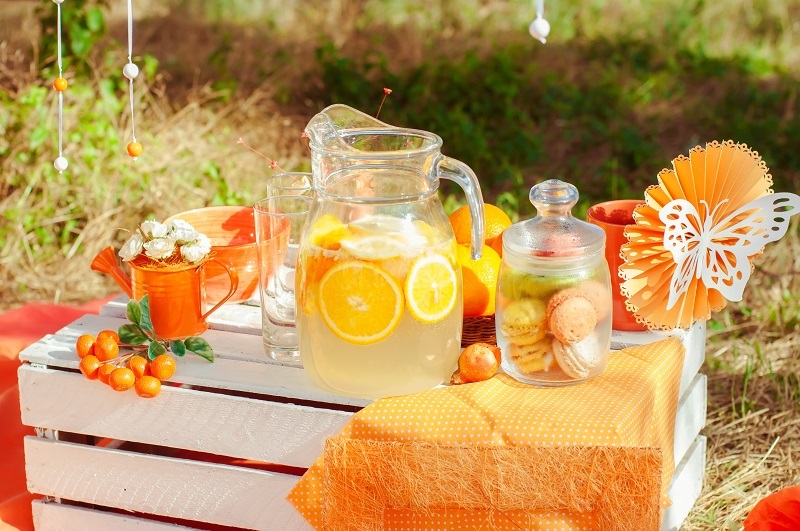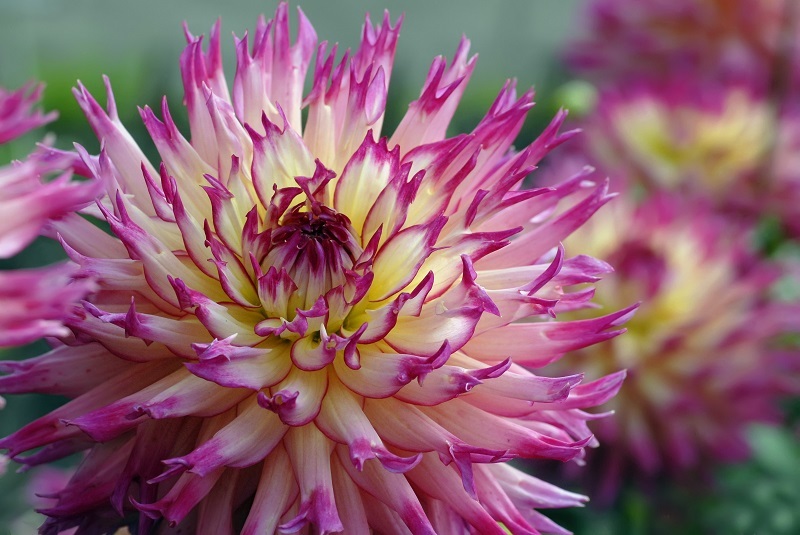Essential Hydrangea Care for Lush Growth
Posted on 04/09/2025
Essential Hydrangea Care for Lush Growth
Hydrangeas are renowned for their vibrant blooms and lush foliage, making them a favorite among gardeners and landscape enthusiasts worldwide. However, achieving those iconic, breathtaking blossoms relies on more than just luck. Instead, essential hydrangea care is the key to cultivating thriving plants with profuse, healthy growth. This comprehensive guide covers every step you need for successfully growing hydrangeas that will become the envy of your garden.
Understanding Hydrangea Basics
Before delving into specific care instructions, understanding the basic needs and characteristics of hydrangeas is crucial. Native to Asia and the Americas, there are more than 70 species, yet a few types dominate home gardens due to their adaptability and ornamental value.
- Bigleaf Hydrangea (Hydrangea macrophylla): Known for mophead and lacecap blooms, with flowers that change color based on soil pH.
- Panicled Hydrangea (Hydrangea paniculata): Features cone-shaped blooms that often turn from white to pink in late summer.
- Smooth Hydrangea (Hydrangea arborescens): Produces reliable white or greenish blooms, even in colder climates.
- Oakleaf Hydrangea (Hydrangea quercifolia): Noted for deeply lobed foliage and elongated creamy blooms.
- Climbing Hydrangea (Hydrangea petiolaris): An adaptable, shade-loving vine for vertical spaces.
Each species requires slightly different care, but all hydrangeas benefit from the essentials covered in this guide.

Optimal Planting Location
Where you plant your hydrangea dramatically affects its performance. While most hydrangeas thrive in partial shade, the specific amount depends on the type. For lush hydrangea growth, consider the following:
- Bigleaf and Mountain Hydrangeas: Prefer morning sun with afternoon shade, especially in hotter climates.
- Panicled and Smooth Hydrangeas: Tolerate full sun, though they appreciate protection from intense midday rays.
- Oakleaf and Climbing Hydrangeas: Best in dappled or light shade, mimicking woodland conditions.
Tip: Choose a spot with protection from harsh winds, which can dry the foliage and damage developing buds.
Soil Preparation for Hydrangeas
Hydrangeas require well-draining, nutrient-rich soil for vigorous root development and lush top growth. Here's how to prepare the ideal foundation:
- pH Matters: For bigleaf hydrangeas, pH affects flower color. Acidic soils (pH below 6) yield blue blooms, while alkaline soils (pH above 7) produce pink blooms.
- Loamy Texture: The best soil is a mix of sand, silt, and clay with added organic matter, ensuring both drainage and moisture retention.
- Organic Enrichment: Before planting, amend the soil with compost, aged manure, or leaf mold to boost fertility and beneficial microbes.
Quick test: Squeeze a handful of damp soil--if it loosely holds its shape without dripping water, it's ready for your hydrangea.
Watering Strategies for Healthy Hydrangeas
Nothing is more important to lively hydrangea plants than proper hydration. Hydrangeas are thirsty, but waterlogged roots can rot and kill a mature plant just as quickly as drought.
How Much and How Often to Water
- Newly planted hydrangeas need watering every 2-3 days for the first few weeks.
- Established plants typically require deep watering once a week, increased during heat waves or dry spells.
- Early morning watering reduces evaporation and decreases the risk of fungal disease.
- Soaker hoses or drip irrigation systems deliver slow, deep moisture, perfect for hydrangeas.
Signs of Under- or Overwatering
- Underwatered: Wilting leaves in the morning, browning leaf tips, and drooping stems.
- Overwatered: Yellowing leaves, leaf drop, and mushy roots.
Mulching for Moisture and Weed Control
Applying mulch around the base of your hydrangea helps maintain soil moisture, suppress weeds, and keep the roots cool.
- Use 2-3 inches of organic mulch, like shredded bark, wood chips, pine needles, or leaf mold.
- Keep mulch a few inches away from the stem base to prevent rot.
- Replenish mulch each spring as it decomposes and enriches the soil.
Fertilizing for Lush Hydrangea Growth
Proper nutrition fuels abundant blooms and healthy foliage. A balanced fertilizing regimen makes all the difference:
- Feed hydrangeas in early spring, as new growth emerges, using a slow-release, balanced fertilizer (10-10-10 or similar).
- For bigleaf hydrangeas, choose a fertilizer high in phosphorus for larger blooms, or a formula with aluminum sulfate to promote blue coloring (if desired).
- Avoid over-fertilizing; too much nitrogen encourages leafy growth at the expense of flowers.
Tip: Stop fertilizing by late July to allow the plant to prepare for dormancy.
Pruning Guide: When & How to Prune Hydrangeas
Pruning hydrangeas keeps them shapely and encourages prolific blooms. However, timing and technique vary by species:
Bigleaf & Oakleaf Hydrangeas:
- These bloom on old wood (last year's stems).
- Prune only right after flowering, removing spent blooms and any weak or dead stems.
- Do not prune in fall or early spring, or you risk cutting off next season's flower buds.
Panicled & Smooth Hydrangeas:
- These bloom on new wood (current season's growth).
- Cut back in late winter or very early spring before new growth begins, reducing stems to half or even low stumps for a compact shape and bigger blooms.
Tip: Whenever pruning, use sanitized, sharp pruners, and always remove dead, crossing, or damaged branches.
Hydrangea Flower Color Control
One of the joys of caring for hydrangeas, especially mophead types, is manipulating the color of their blooms:
- Blue Flowers: Achieved by acidic soils (pH 5.2-5.5). Add aluminum sulfate or organic amendments like pine needles or coffee grounds.
- Pink Flowers: Encouraged by alkaline soils (pH 6.0-6.2). Add lime or crushed oyster shells to the soil.
- White hydrangeas cannot be changed, and some varieties do not respond to soil pH.
Pest and Disease Prevention in Hydrangeas
Hydrangeas are generally tough, but certain insects and diseases can affect their health:
Common Pests
- Aphids: Small green or white bugs clustered under leaves and new shoots. Hose off with water or treat with insecticidal soap.
- Spider Mites: Fine webbing and stippling on leaves. Increase humidity and use horticultural oil if necessary.
- Slugs and Snails: Chewed foliage, especially on young plants. Use slug traps, or hand-pick at dawn or dusk.
Potential Diseases
- Powdery Mildew: White powdery coating, usually on shady, poorly ventilated plants.
- Leaf Spot: Purplish spots on leaves; remove affected parts and avoid overhead watering.
- Root Rot: Caused by overwatering or poorly drained soils--improving drainage is essential.
To prevent problems, maintain excellent air circulation and avoid wetting foliage when watering.
Overwintering Hydrangeas: Seasonal Care Tips
Many hydrangea varieties require a little help to survive winter's chill and guarantee spring resurgence:
- Mulch heavily around the base in late fall to insulate roots.
- If in a region with harsh winters, construct a wire cage around the plant and fill it loosely with leaves or straw for extra protection.
- Avoid late-season pruning, which can stimulate new, vulnerable growth.
- Remove winter protection slowly in early spring as new growth appears.
Container Growing: Hydrangea Care in Pots
Growing hydrangeas in containers is a stylish way to add color to patios and balconies. The same essential hydrangea care rules apply, with a few adjustments:
- Use a large pot with drainage holes, filled with a quality potting mix rich in organic matter.
- Water more frequently, as pots dry out faster than ground soils.
- Feed with liquid fertilizer monthly during the growing season.
- Provide winter shelter for potted hydrangeas in colder zones.
Frequently Asked Questions: Hydrangea Care
Why isn't my hydrangea blooming?
- Improper pruning (removing flower buds)
- Too much fertilizer or nitrogen
- Lack of sunlight
- Winter bud damage
When is the best time to plant hydrangeas?
- Early spring or fall is ideal, when temperatures are mild and stress is minimized.
How can I keep my hydrangea blooms from wilting?
- Water consistently, especially during dry spells, and mulch well to conserve soil moisture.

Lush Hydrangeas: Creative Ideas and Companion Plants
To make your hydrangea garden stand out, consider pairing with companion plants that share similar light and moisture needs. Great options include:
- Hostas
- Ferns
- Japanese forest grass
- Astilbe
- Coral bells (Heuchera)
- Boxwood for formal structure
Design Tip: Plant in drifts or large groups for an unforgettable, billowing effect and layer with shorter perennials at the front.
Conclusion: The Secret to Lush Hydrangea Growth
With a combination of proper siting, rich soil, consistent watering, annual mulching, balanced feeding, and appropriate pruning, any gardener can enjoy hydrangeas that offer years of spectacular blooming and robust growth. Don't forget the importance of monitoring for disease and pests, and always choose varieties suited for your region.
By following these essential hydrangea care tips, you'll be rewarded with healthy shrubs that burst into lush, crowd-stopping color season after season. Plant, nurture, and enjoy your journey to hydrangea excellence!
Latest Posts
Delivering Fresh Flowers in [NEIGHBOURHOOD]: What You Need to Know
The Top Wedding Venues for Flowers in [AREA] This Year
Essential Hydrangea Care for Lush Growth






